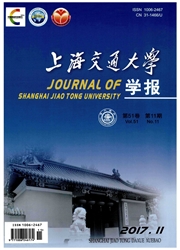

 中文摘要:
中文摘要:
将描述单元化制造系统状态所需信息量分为结构熵和运行熵2种形式并予以定义;在信息熵理论基础上,构建了单元化制造系统的结构熵与运行熵函数,并对制造资源的状态认定进行说明;根据调度理论,分别建立最大可能调度时限和调度符合度模型.以实施单元化制造的某加工车间为背景,依据其在不同状态下制造资源的状态信息,实证分析并绘制了系统状态随调度变化的示意图,利用所建熵函数及调度模型对系统状态进行度量,以验证所提出方法的科学性与有效性.结果表明,通过所构建的信息熵模型,可实现对单元化制造系统状态的度量与监控,并为提高系统的运行效率提供有效途径.
 英文摘要:
英文摘要:
The states of manufacturing resources can be monitored and assessed through the amount of information needed to describe their technological structure and operational state from an information-theoretic perspective. The amount of information needed to describe cellular manufacturing systems was investigated by two measures, the structural entropy and the operational entropy. The structural entropic model and the operational entropic model were developed based on the Shannon entropy, respectively. Scheduling was introduced to measure the entropy models of cellular manufacturing systems and the feasible coneepts of maximum schedule horizon and schedule adherence were advanced to quantitatively evaluate the effectiveness of schedules. The conclusion shows that the states of cellular manufacturing systems can be measured and monitored and effective ways can also be provided for improving operational efficiency of the systems by the entropy models built.
 同期刊论文项目
同期刊论文项目
 同项目期刊论文
同项目期刊论文
 期刊信息
期刊信息
